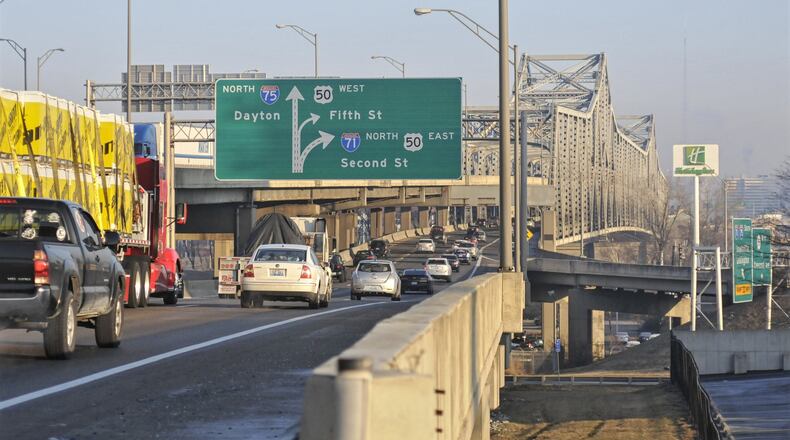Preliminary routes show the bypass stretching beyond the Cincinnati area into northern Warren County where it would rejoin I-75 near Franklin and the Montgomery County line, if it were built.
On Tuesday, the U.S. PIRG Education Fund and the Frontier Group included the bypass on their sixth annual list of highway boondoggles in the United States.
The report, which lists seven proposed highway projects that would cost up to $26 billion, urges a rethinking of transportation priorities across the country, in part due to changes wrought or accented by the pandemic.
“America was already faced with the need to make critical transportation investments. And then COVID-19 hit, upending travel patterns and undercutting the traditional sources of government transportation revenue,” the report said.
The Eastern Cincinnati Bypass “would cause sprawling development and overwhelm the Ohio Department of Transportation’s construction budget,” the report says.
Initially championed by Henry Fischer, founder of Kentucky-based Fischer Homes, and promoted by some regional leaders, the bypass project is part of an ongoing study by the Kentucky Transportation Cabinet.
It was firmly rejected last January by the Ohio Department of Transportation.
The ODOT report emphasized that the region has other transportation funding needs, including the I-75 corridor. It also warned of potential environmental damage, particularly if the project required the highway to cross the Little Miami River. The study identified more than 15 square miles of land that would be subject to “significant impacts to property and environmental resources.”
Last week, ODOT spokesman Matt Bruning said the department’s view was unchanged and referred a reporter to the line in the report that concluded “it is ODOT’s opinion that no further expenditures of funding and staff time be put toward” the idea.
Supporters of the project include the Citizens for the Cincy Eastern Bypass, “a diverse group of Political and Business Leaders and other Citizens,” according the “supporter statement” on the group’s web site.
The Bluegrass Institute for Public Policy Solutions also backed the project.
Fischer and local lawmakers who have bucked those opposed to the project did not respond to requests for comment, indicating support had waned.
“We feel that the project’s huge cost ($7.3 billion) combined with the fact that enough legislators have still supported it in the past few years, is enough to merit the project’s inclusion into our report as well as the continued call for the official cancellation of the project,” PIRG transportation advocate John Stout said.
Ohio ranks 41st per capita in terms of federally funded road expansions with $89.7 million in total cost. The state’s debt from bonds issued for these project was more than $4 billion in 2018 and 18% percent of Ohio roads were in poor condition in 2017, according to the new report.
In addition to misspending public dollars and enlarging public debt, the new report, “Highway Boondoggles 6: Big Projects. Bigger Price Tags. Limited Benefits,” found the project would “harm communities and the environment, while likely failing to achieve meaningful transportation goals.”
In addition, the report said “expanding a highway sets off a chain reaction of societal decisions that ultimately lead to the highway becoming congested again – often in only a short time.”
Building more roads also “fuels additional driving that contributes to climate change. Transportation is the nation’s number one source of global warming.”
Such projects also hurt communities by “forcing the relocation of homes and businesses, widening ’dead zones’ alongside highways, severing street connections for pedestrians and cars, and reducing the city’s base of taxable property.”
Instead governments “stop or downsize unnecessary or low-priority highway projects” and invest in public transportation, adopt alternative land-use policies and road-pricing approaches, along with technologies that can help drivers avoid traffic gridlock.
Money saved on the new roads can be used to shorten long lists of maintenance needs on existing roads and bridges, the report added.
The bypass critics completed their report before the Brent Spence bridge was closed, but were confident this wouldn’t have affected their findings.
“It’s been pretty well proven that highway expansion doesn’t improve traffic congestion or highway safety,” Stout said.
About the Author



